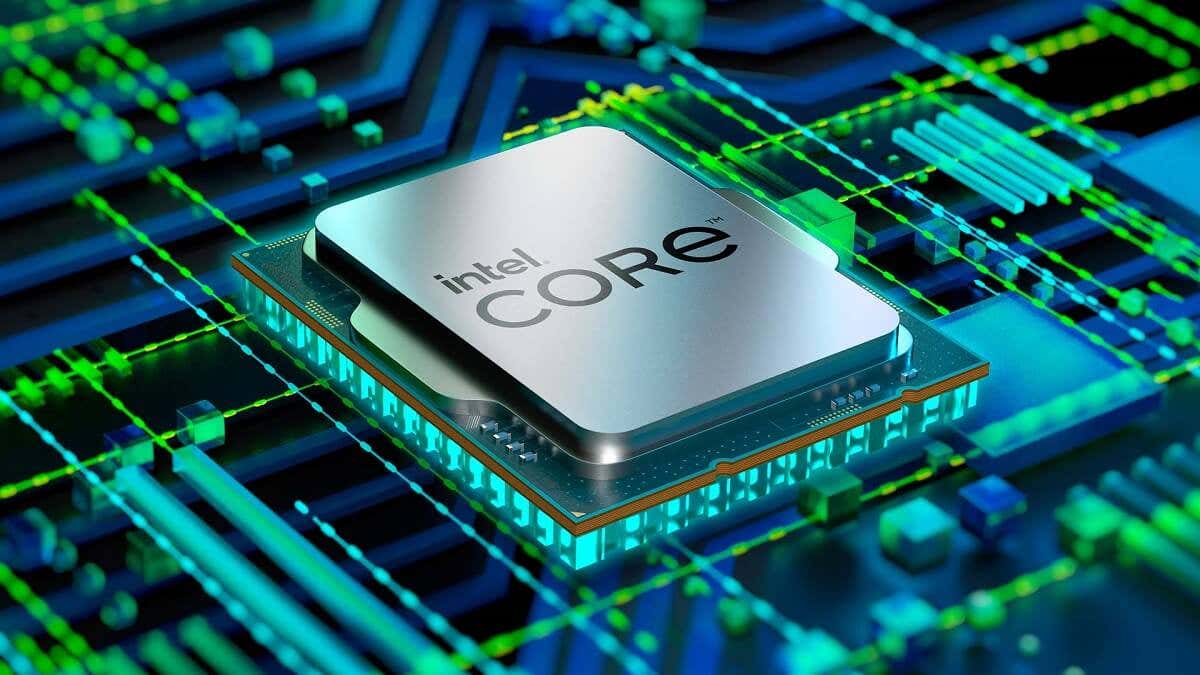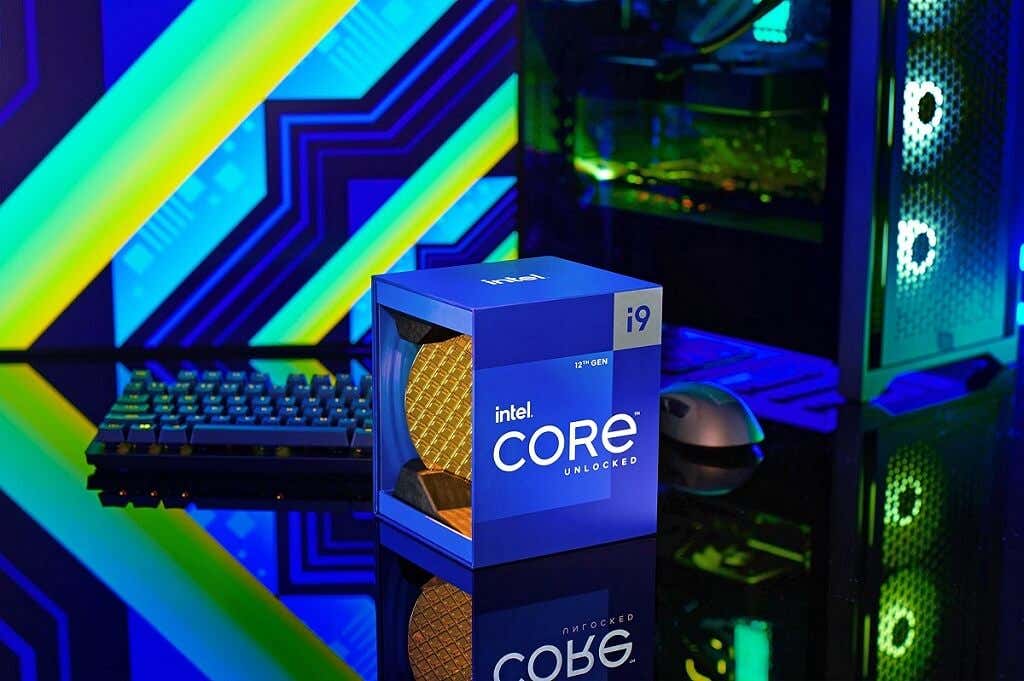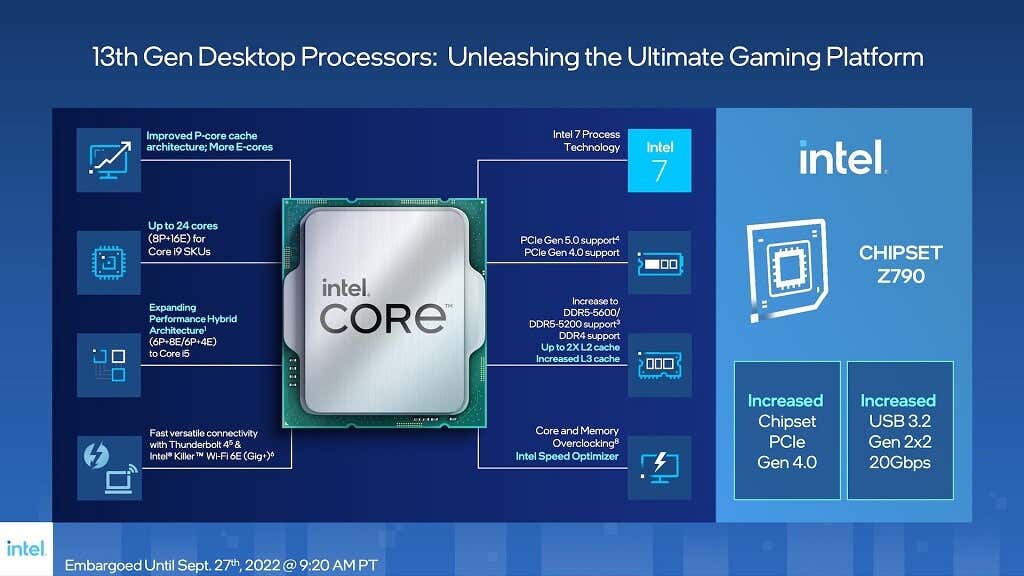The increasing number and speed of CPU cores aren’t new. But recently, Intel has shaken up the game by introducing CPUs with two core types, known as P-cores and E-cores—a first for mainstream computers.
With Intel’s 13th Gen “Raptor Lake” CPUs on the way, we thought it would be an excellent time to discuss what E-cores and P-cores are and why it matters.
What Are P-Cores and E-Cores?
Until recently, most multi-core Intel CPUs have been composed of almost identical cores. Usually, each core has the same capacity and clock speed, and the “work” is spread between them to process tasks faster.
That’s where Intel’s new CPUs differ. They now feature two kinds of cores:
- Performance Cores (P-cores). The larger, more powerful P-cores focus on heavier tasks. These are based on Intel’s Golden Cove CPU core micro-architecture. They also offer potential hyperthreading capabilities, which allow each core to handle two threads simultaneously, further boosting performance.
- Efficient Cores (E-cores). The efficiency-focused E-cores target background tasks that run all the time but require less energy. These are based on Intel’s efficient Gracemont CPU micro-architecture and aim to maximize performance per watt used.
This combination enables processors to increase performance speeds and take on higher workloads while lowering power consumption. This is all thanks to Intel’s Thread Director, a technology that assigns P- and E-cores to different tasks in an optimal way.
Which CPUs Contain P- and E-Cores
The new core design began with the mobile Lakefield chips (Intel Core i5-L16G7 and Intel Core i3-L13G4). Finding some success in the approach, Intel decided to use it once more in the most recent lineup of PC processors—the Alder Lake CPU series.
We’ll discuss these Alder Lake CPUs in the following few sections.
Intel Core i9-12900K
The 12900K has the following:
- Core Count: 16 cores with 8 P-cores, 8 E-cores, and 24 total threads.
- Frequency: P-cores with 3.2 GHz base and 5.2 GHz peak (using Turbo Boost Max 3.0, a P-core feature). E-cores with 2.4 GHz base and 3.9 GHz peak.
Intel Core i7-12700K
The 12700K has the following:
- Core Count: 12 cores with 8 P-cores, 4 E-cores, and 20 total threads.
- Frequency: P-cores with 3.6 GHz base and 5.0 GHz peak (using Turbo Boost Max 3.0). E-cores with 2.7 GHz base and 3.8 GHz peak.
Intel Core i5-12600K
The 12600K has the following:
- Core Count: 10 cores with 6 P-cores, 4 E-cores, and 16 total threads.
- Frequency: P-cores with 3.7 GHz base and 4.9 GHz peak (using Turbo Boost Max 3.0, a P-core feature). E-cores with 2.8 GHz base and 3.6 GHz peak.
The Benefits of Hybrid Architecture CPUs
When Alder Lake was released, there were some hiccups with the new high-performance, high-efficiency approach to CPU core design.
Some software reportedly had issues adapting, and it took months for Microsoft to release an update that let the cores run as they should on Windows 10. This was because the software was written for the Windows 11 operating system which provides a brand-new CPU Task Scheduler.
But with these obstacles mostly out of the way, Intel’s new hybrid architecture provides many benefits for PC users, including:
- Increased speeds. According to Intel, at the time of release, the 12th generation P-cores have 19% better performance than the 11th gen cores. Likewise, the E-cores feature a massive 40% improvement in single-core efficiency over Skylake chips.
- Improved battery life. The biggest winner of P- and E-core architecture might be laptops. This is because, with the increased energy efficiency of E-cores, background apps use less power, and battery life is extended.
- Included support for next-gen technologies. The Alder Lake CPUs provide better performance and efficiency through the P- and E-cores and support new tech. This includes PCIe 5.0 (with PCIe 6.0 already on the way) and DDR5 RAM (the successor to DDR4 RAM), surpassing both AMD and Apple in connective technologies.
Intel’s new Raptor Lake, soon to be released, builds on the hybrid architecture of Alder Lake. With greater speeds, efficiency, and compatibility, the 13th Gen CPUs promise to herald a new age of CPUs.
The Future of CPUs
With Intel’s 12th Gen CPU package taking the crown in CPU performance, and the 13th Gen already on the way, it seems like the new hybrid architecture is the way of the future—especially for gamers and other high-spec users. Indeed, AMD is rumored to be introducing a similar hybrid CPU structure in its AMD Ryzen 9000 line in late 2023 or early 2024.




